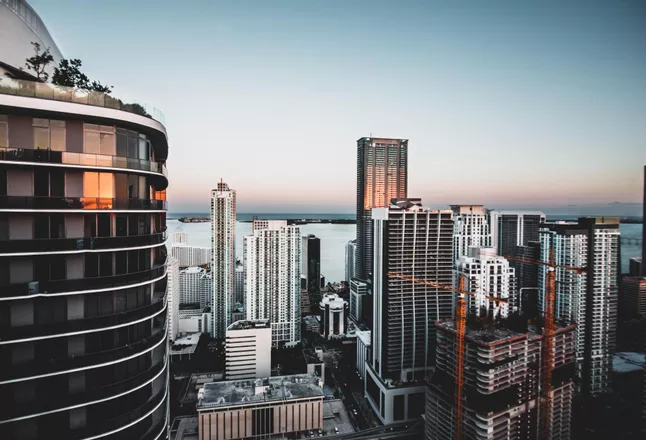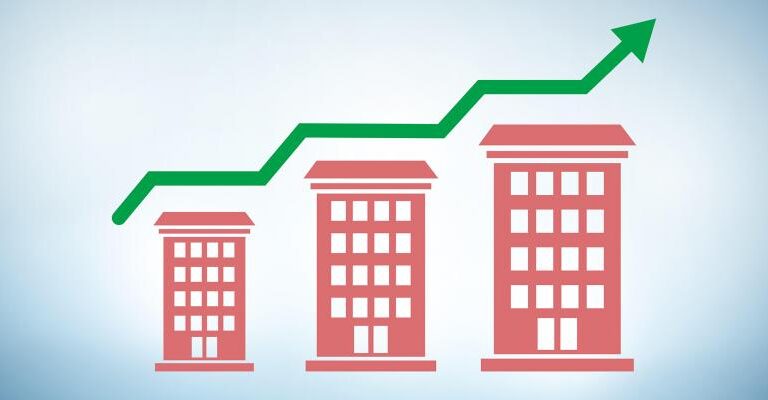Demand remains high and the tenant base is stable, leading to healthy interest from real estate investors.
The medical office sector couldn’t be in better shape despite fears of the impact from telemedicine and given the demand for health care, the industry should be robust over the next 12 months, according to analysts.
A segment known for its stability and resistance to recessions set record highs for asking rents in 2021 as vacancies decreased–a trend expected through the next year and beyond. Development of new medical office buildings continues after a slowdown at the start of the COVID-19 pandemic, and for quality properties on the market, investors are gobbling them up quicker than ever. That’s coming off record highs in sales volume and pricing in 2021.
None of that demand is a surprise given an aging population along with migrations and relocations that have picked up since the start of the pandemic in 2020.
Maddie Holmes, a New York-based senior research health care analyst for JLL, said medical office absorption hit a record in 2021 at 18.5 million sq. ft. on a trailing fourth-quarter basis–nearly two times the typical rate going back to 2019 and previous years. That demand continues to be strong in 2022 despite telemedicine becoming a bigger part of the health care landscape.
“Health care is a contact sport in that you have to see your physician,” said Bryan Lewitt, a managing director for healthcare in JLL’s Southern California office. “Telemedicine and Facetime and other avenues of technology aren’t enough because they’re not diagnostic. When the hospitals closed because of COVID, most people delayed their health care visits, procedures. That has created a huge demand for these next two years.”
Travis Ives, an executive director with Cushman & Wakefield’s who heads its U.S. Healthcare capital markets team, said telehealth has even helped the medical office segment because it connects patients with physicians. That makes it more likely that a serious problem will be diagnosed and require treatment, he said.
“That treatment is going to occur in a medical office building rather than in an emergency situation like in a hospital,” Ives said. “There’s just so much health care that can’t be delivered over the phone. It’s become another component to the delivery care continuum, but not something that’s going to replace medical offices.”
The state of medical office occupancies
During the pandemic when there was a slowdown in construction starts, coupled with those high rates of absorption, occupancy for medical offices moved from 91.3 percent during the first quarter of 2020 to 91.7 percent at the start of the first quarter of 2022, Holmes said.
Shawn Janus, national director of Healthcare Services for Colliers, reported five of the 10 leading U.S. markets started 2022 with vacancy rates lower than the national average of 8.3. percent. Boston had the lowest vacancy rate at 6.3 percent, followed by New York, 6.8 percent. Miami, Philadelphia, and Chicago were below the national average while Los Angeles was just above it. On the other side, Dallas and Houston had the highest vacancy rates among leading markets at 10.9 percent and 12.5 percent, respectively. Atlanta and Washington, D.C. exceeded 9 percent, Janus said.
“I think you’re seeing vacancy in older medical buildings that are now picking up office tenants, while class-A and class-B (medical offices) have lower vacancy. And if they are strictly medical they do much better,” said Susan Wilson, a healthcare real estate advisor for Lee & Associates and vice president of Lee Healthcare.
Medical office rents historically grow at a steady rate of 2 percent to 3 percent year–over-year, but that pattern is being challenged by current conditions.
“There’s very little supply coming online, and we have already fallen below 10 percent vacancy, which is not a healthy market for tenants,” Lewitt said. “The landlords are going to have a lot of leverage, plus you have increased construction costs that will make it difficult for providers to relocate. I suspect that rents are going to continue to go up because 80 percent of tenants renew their lease in health care. It’s a very sticky business.”
During the BOMA International’s Medical Office Buildings + Healthcare Real Estate Conference held in May in Nashville, Ives said this was the first time that every meeting they took with medical office building owners focused on rental growth.
“They are starting to push their annual escalations and wondering how far they can push their rents,” Ives said. “Most of them have portfolios that are getting up to 90 percent to 95 percent occupied and are starting to think ‘we may as well be asking for it at this point.’ I think rent growth will run hot here for a little bit. As long as vacancy remains tight and inflation is relatively high, I think you will see rent growth running higher than it has historically. Where it used to be the norm to ask for 2.5 percent to 3 percent annual increases on a new lease, in a lot of markets now it’s 3.5 percent to 4 percent-plus. That might not be a big deal in other products but for medical offices those are big escalations.”
Janus said there’s a lot of discussion with tenants about sharing inflation risks since a 2 percent increase doesn’t compensate owners costs with inflation currently running at 8 percent.
“I have heard 4 percent fixed-rate increases, which I have never seen in 20-plus years in this space,” Janus said. “There has been talk about going to CPI and doing it in a risk-sharing manner.”





